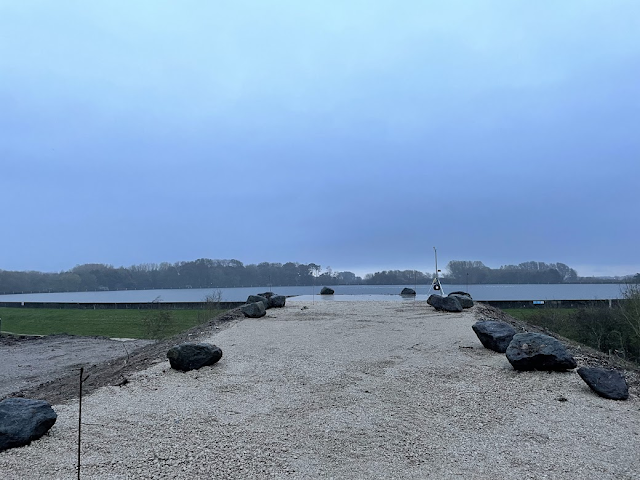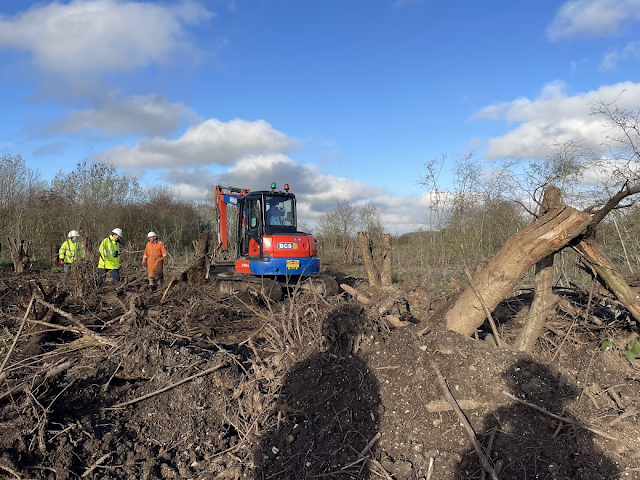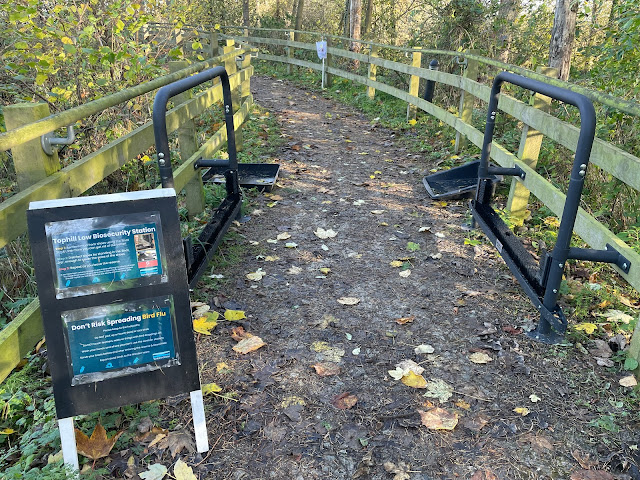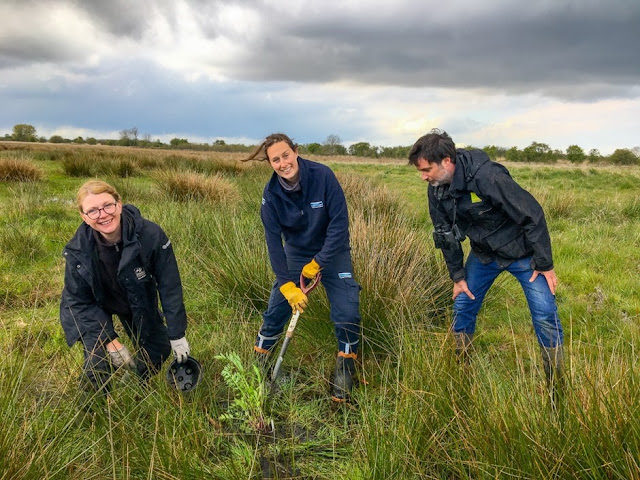As promised, we have reviewed visitor access to different areas of the reserve and considered what other engineering works are to be carried out. We have decided that we can now open to the public daily including weekdays starting from tomorrow, 26th November. Member access will continue to be the same as always with access to the reserve outside office hours and access to the Izzard hide.
Many regulars will be thrilled to hear that the North Marsh hide is now open again and the habitats freshly cleared;
Currently North Marsh is the most northerly hide accessible and the back to backs on south marsh the furthest south.
The two fantastic vantage points that we have built are still
awaiting hides on them, so access is not yet permitted as it causes too much
disturbance until these are in place. We will have to wait a while longer for these areas to be
accessible to visitors. Watton nature reserve can still only be viewed from the
public bridleway, which is along Barmston drain, outside our reserve. We aim to
get the hide and path to it through south scrub back open by next weekend.
And we hope in coming weeks to restore full access to a renovated Angus McBean hide on Hempholme.
Unfortunately, one aspect of visiting our reserve, similar to others across the UK, is that you may notice birds that are or have been affected by bird flu.
For us this seems to have arrived in earnest with the migratory pink footed geese before spreading into the naturalised greylag flock. Typically symptoms of affected birds will be fitting or similar stereotypical behavior for which unfortunately we cannot cure or interject.
This can be upsetting, and we are trying our best, when it
is safe to do so, to remove any carcasses.
In order to prevent the transfer of bird flu between Tophill Low and other places we are implementing some simple procedures that will help. This involves your help as you arrive and leave the reserve by scraping your footwear and dipping in disinfectant at the entrance to the reserve.
We have some substantial boot scrapers and simple instructions to follow. We are also asking you to clean footwear at the entrance to Izzard hide as this is an area where birds often walk across the path.
These biosecurity measures are to stop
the spread of bird flu between nature reserves. The infection is not airborne
and the risk of contracting it is very minimal however good hand washing and
simple hygiene is the way to keep everyone safe and always is good practice.
Visitors will notice that on the area near our butterfly border there is a new and exciting additional building, our brand new polytunnel.
Here we intend to propagate wetland and woodland plants, starting with greater water parsnip. A plant that has done very well at Tophill in recent years yet is a nationally rare wetland plant.
Our aim is to source plants of local provenance like bogbean, marsh lousewort, marsh pea to name a few that we can both increase biodiversity at the reserve, and spread to other local nature reserves.
In a similar way we will be able to propagate woodland species and so increase the biodiversity of our woodland areas. The students from Kingsmill school and East Riding college, alongside our team of volunteers will be instrumental in the work being carried out so that in future years they can see the benefits of their labour. Recently they have planted plenty of acorns and are hopeful of seeing them germinate in the spring. They will be grown on in the polytunnel, protected from herbivores before being planted out in the woodland.
The wet and cold weather, typical of autumn has meant the
eruption of fungal fruiting bodies around the reserve. The vast majority of a
fungal organism lies beneath the surface and its long mycelium strands can
extend metres from the fruiting body that we see erupt above the surface in
readiness to disperse its spores and begin the next generation. The names for
many fungi in the woodland are very descriptively apt, with names like jelly
ear, turkey tail and dog sick slime mould, all describing perfectly the
appearance of these fungi. We leave plenty of dead wood on the ground in the
woodland that is idea habitat for many fungi and in turn also good for invertebrates.
Southcoates Lane primary school and Bugthorpe primary school have been busy
investigating in our insect arena to find minibeasts, using pooters and pots to
collect and study them. Great fun for these year 1 and 2 children.
With the shorter days it has been possible to see flocks of
numerous species fly into the reserve to roost before leaving at the end of a
working day. Last Friday a few staff members and colleagues witnessed a small murmuration
of starlings all jostling for position in the reedbeds on south marsh west. All
was still until a peregrine flew through them, unsuccessful it flew away only
to be replaced by three marsh harriers also looking for a late snack. The
starling flock is beginning to increase each week, so we are hoping for a
spectacular sight in late December. Starling numbers are increased from flocks
joining from the continent as weather conditions plummet and feeding becomes difficult.
There has also been a huge influx of blackbirds, fieldfares and redwings
recently, all seen on the reserve. Following them, along the east coast, have
been small numbers of waxwing so fingers crossed they may grace the south scrub
berry laden bushes.
The gull roost is building on both reservoirs, always a
challenge for any birder! A good scan
through the flocks could turn up a Mediterranean gull or a kittiwake, both have
been seen recently. Curlew and lapwing are roosting on south marsh and there is
a big flock of mixed finches – greenfinch, siskin, goldfinch and chaffinch,
feeding on the wildflower area. The car park is often a great place to start
looking for finches, often the place to see siskin and the path along from
north lagoon a good place to spot lesser redpolls feeding on the alder catkins.
The D reservoir is attracting large numbers of wildfowl -tufted duck, pochard,
great crested grebe, goldeneye, shoveler and gadwall. We have also seen whooper
swans regularly on D reservoir and small flocks of pink footed geese flying
over. A great white egret and several little egrets are common sights around
the reserve and of course kingfishers too on any of the water bodies. Woodcock
have been flushed from just off the nature trail path on a couple of occasions
this week, great to see these birds using the wet woodland habitat.
There are several areas where you will see that our
volunteers have managed the different habitats. One in particular that has
taken a large amount of volunteer hours has been the clearing of much of the
vegetation on north marsh. The island now has a clear section down the middle
and the ditches are much clearer and wider to aid wildlife viewing. Amy was
rewarded very early morning this week with amazing views of a female otter
carrying what looked like prey under a willow tree. Earlier she had heard
several high-pitched calls, indicating the presence of young kitts. So if you
have the patience and the time then a visit to north marsh may be rewarding.
















